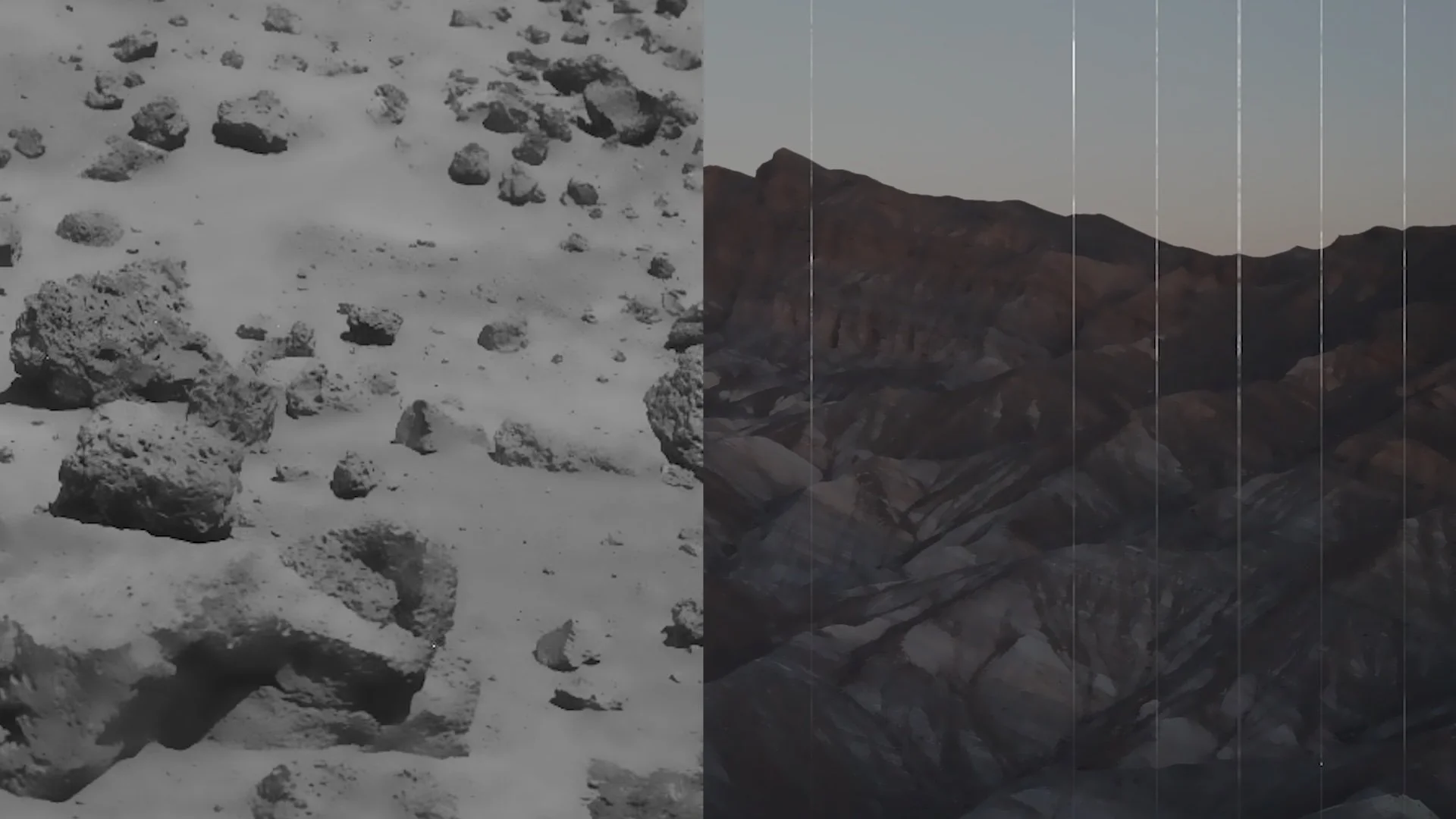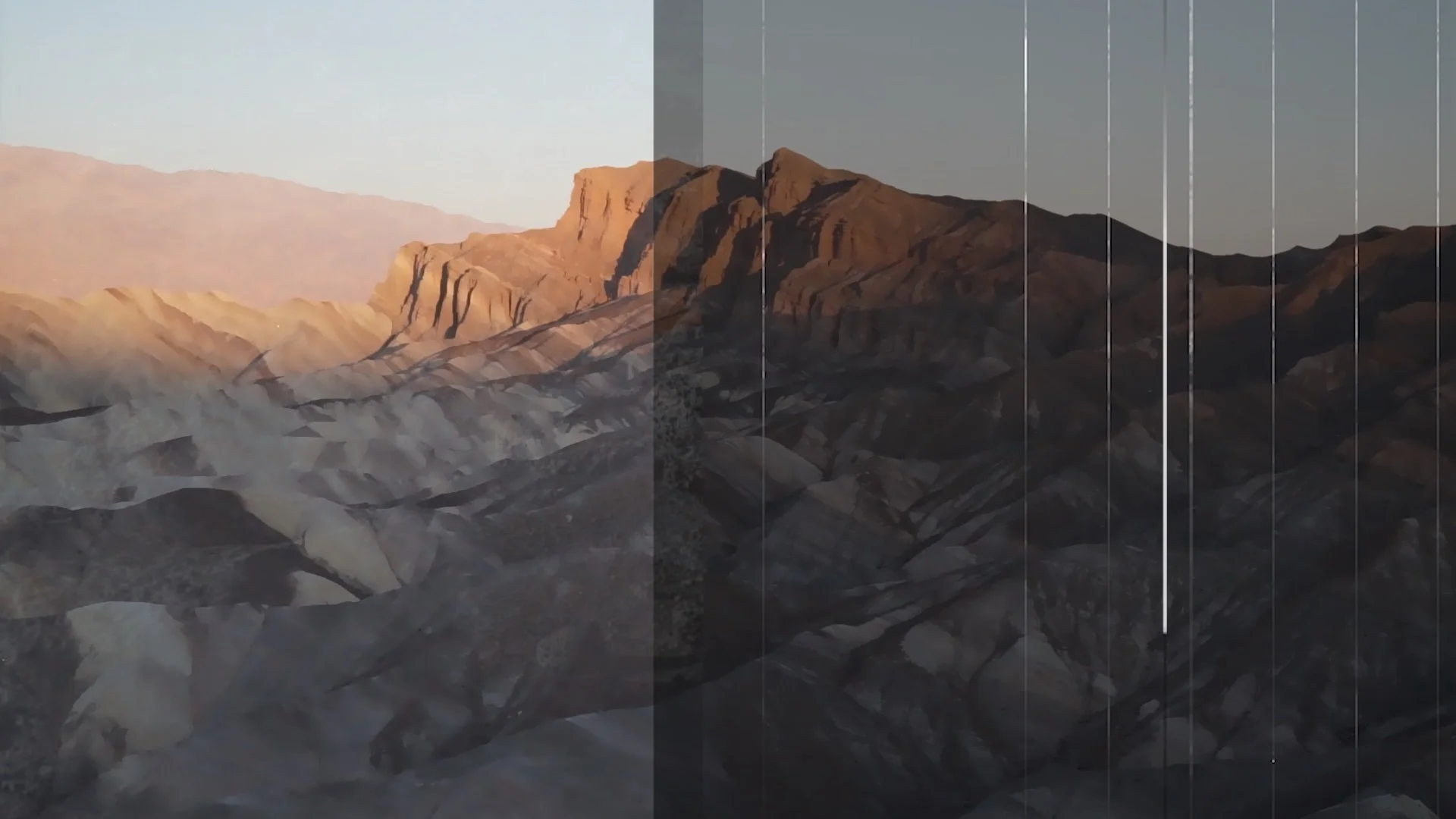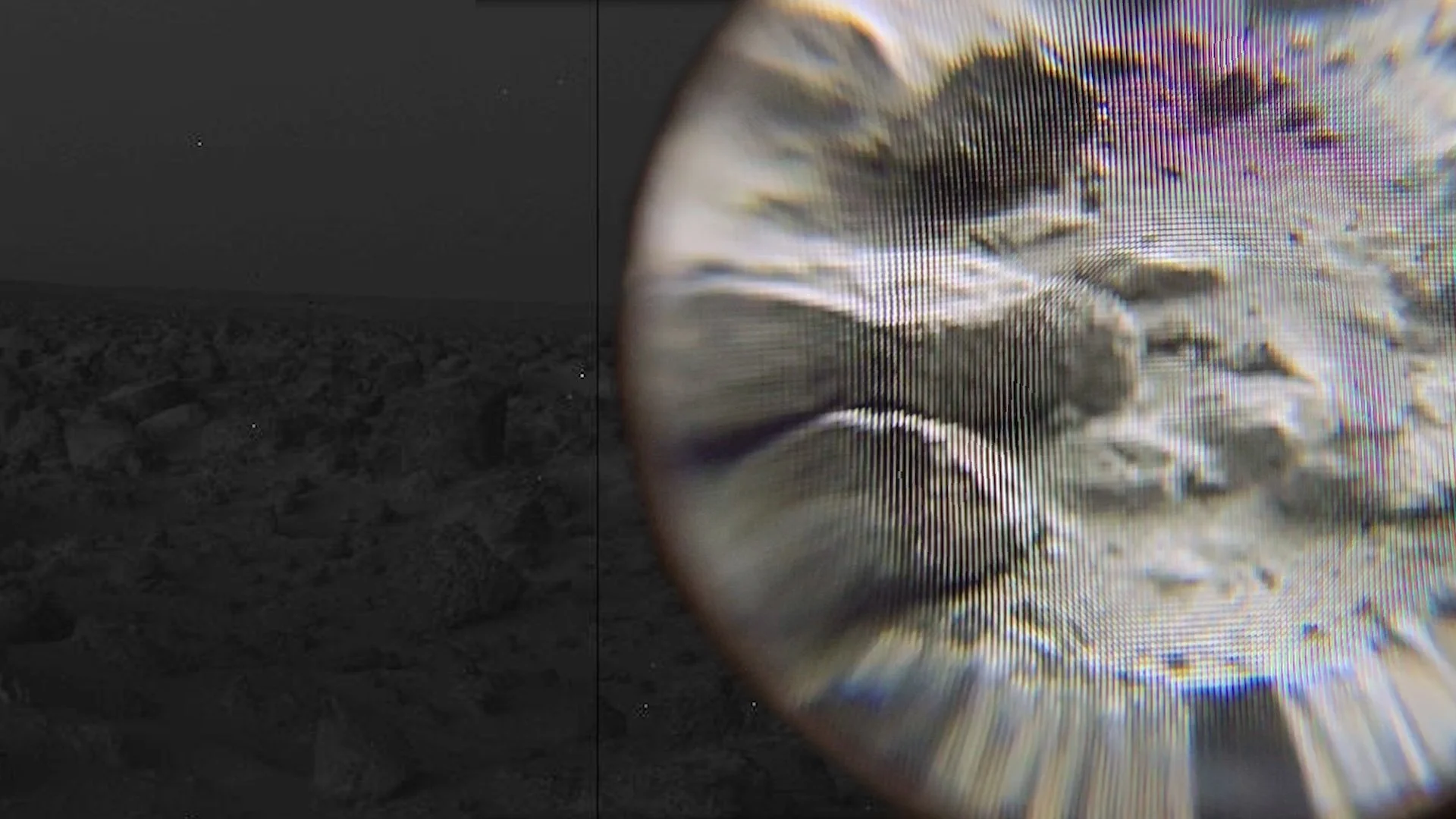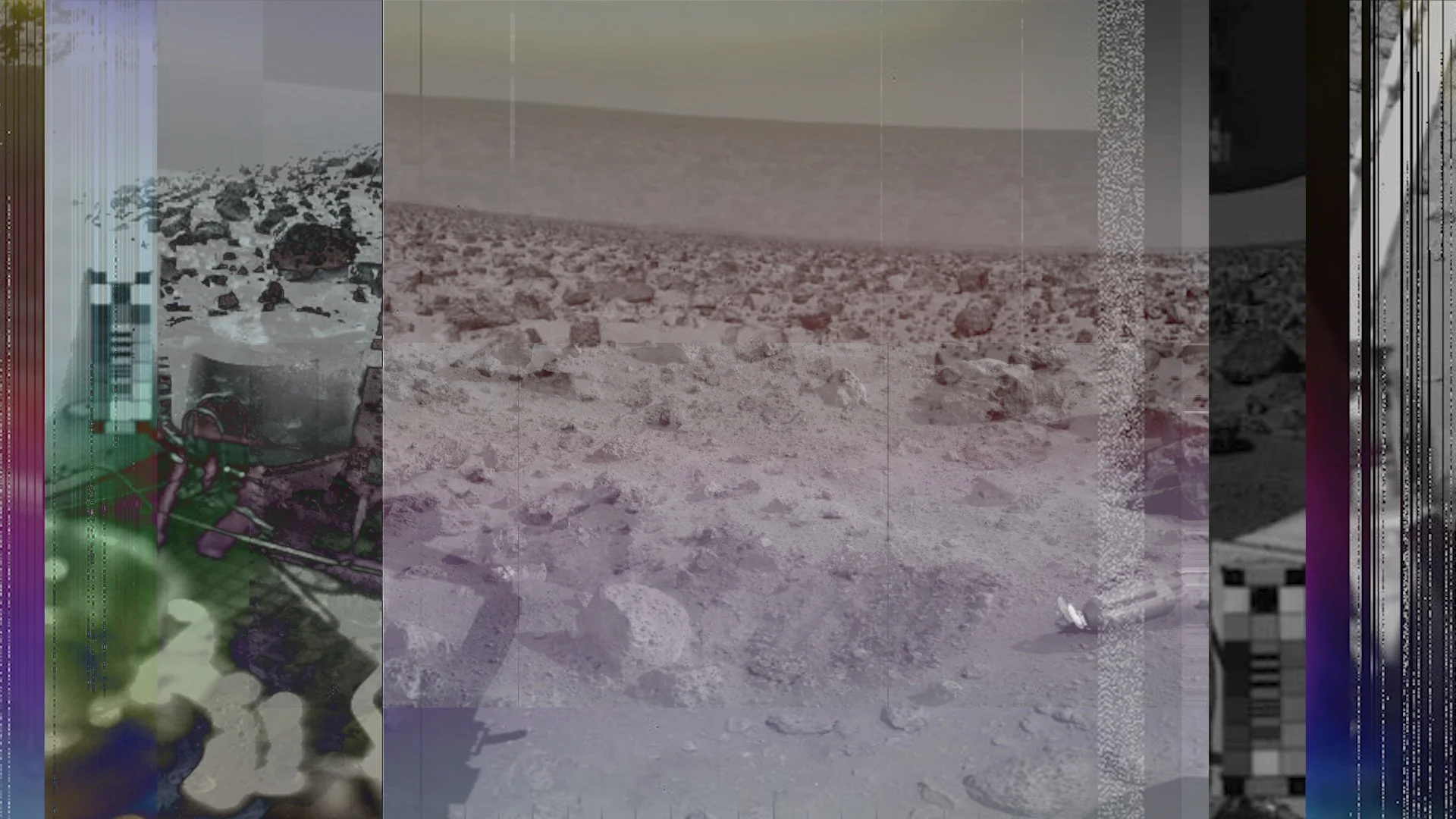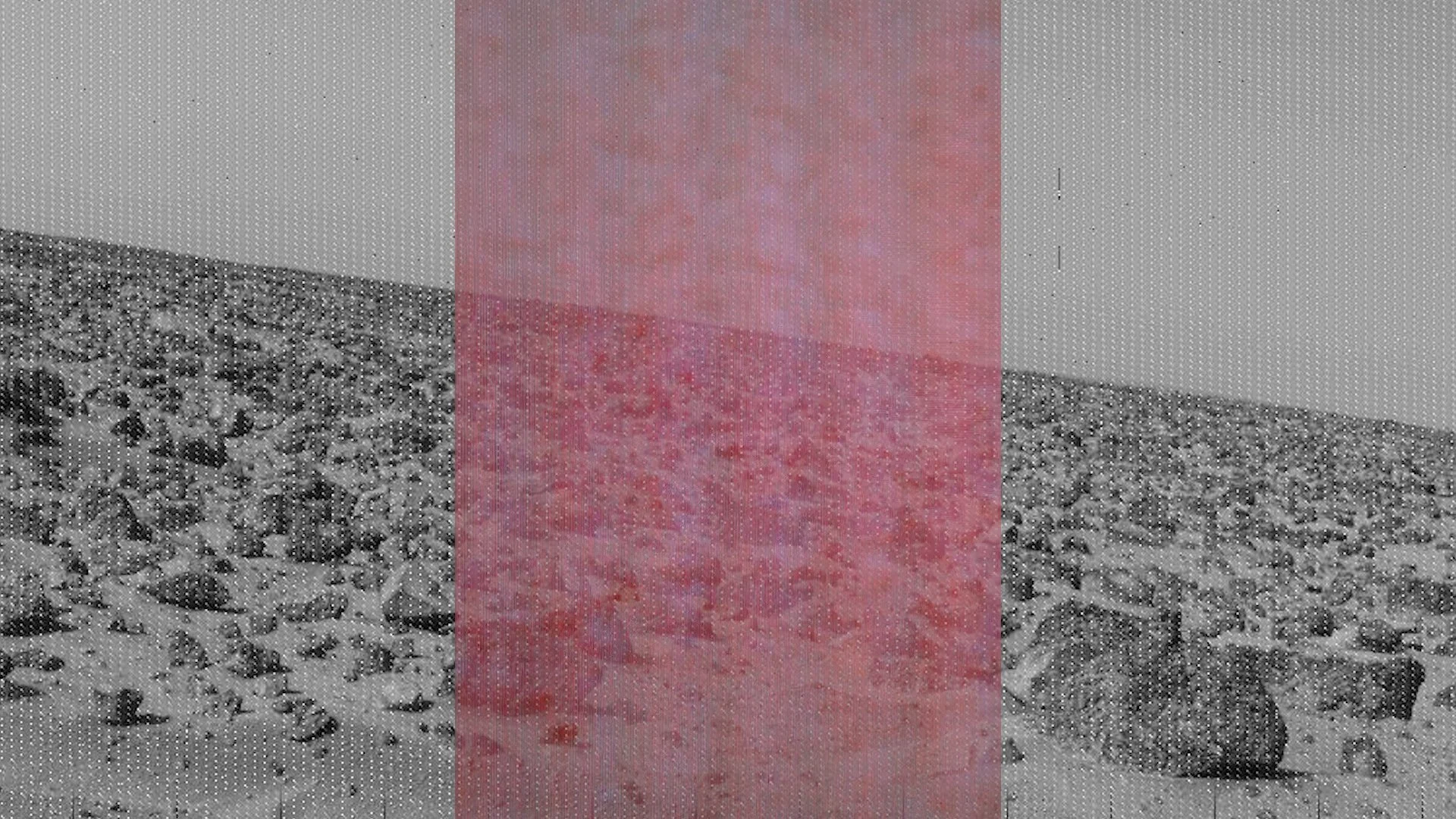
Viking Lander, digital video, running time 14:21
Viking Lander reimagines the making of the first images on Mars in the 1970s. Using archival imagery from NASA’s Viking mission, layered with footage from Mars‑analog landscapes on Earth, the film takes the perspective of the Lander’s vertical scanning camera which captured narrow strips of data later assembled into panoramic views of Mars. Weaving data, memory, and terrain, Viking Lander reveals how planetary images are not found but built as fragments of tape and code are stitched into visions of another world.
The pace of the film with a running time of 14:24 is built around the slow, deliberate way Mars first came into view. Its mediative motion allows viewers to feel the lag between signal and image, between raw data and human vision. Like the Landers themselves, the piece moves deliberately, assembling fragments into a moving-image collage of landscape that tracks the lonely passage of day and night from one solitary stance.
Viking Lander follows from my first video on the subject, titled Unraveling Mars, in which I am handling the silver gelatin printed images that resulted from the Lander’s image data, housed in the archives of the Eastman Museum in Rochester, NY. It is part of my ongoing research into the making of planetary images and the places on Earth that connect us to those foreign bodies.
The scene opens inside the camera’s scanning mechanism as grains of sand register in light and shadow. This movement was created with a video recording of a flatbed scanner scanning my printed images of paper sculptures. These scanning actions overlay archival Viking Lander images of the surface of Mars, merging the textures of paper and land. The Viking Landers are special because they represent the first time images were captured from the actual surface of Mars. Prior images of Mars came only from orbiters above.
The next scene opens with sunrise at Zabriskie Point, a famous badlands feature of Death Valley, California. The 1964 film Robinson Crusoe on Mars was filmed at Zabriskie Point. This along with many surrounding sites in the Valley are widely studied as Mars analog locations. As the sunrise slowly illuminates more of the ridgeline, the scene becomes segmented by vertical interventions of dark strips and orbs of light. Lens flares, optical “floaters,” planetary bodies, or the sun itself; the source of these orbs is unknown.
